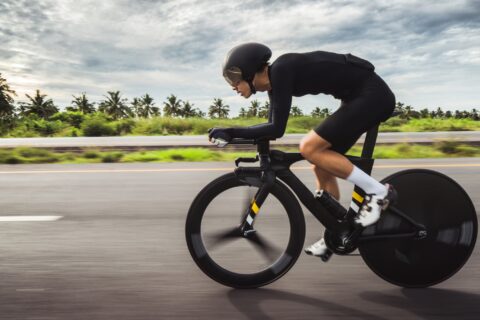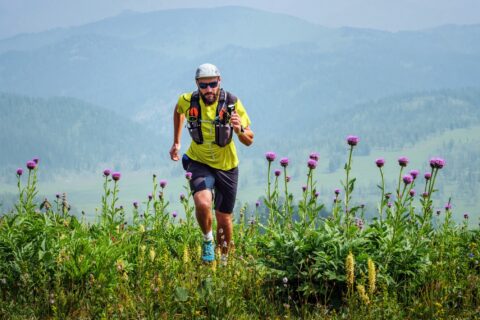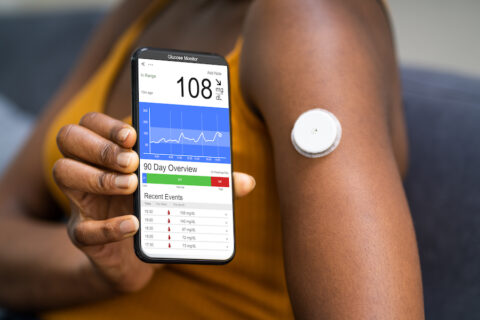Are you a sprinter, time trialist, punchy climber, or something else?
How does your phenotype as a cyclist affect how you respond to training? And can you determine what type of athlete you are by analyzing your training data?
In this workshop, Dr. Stephen Cheung analyzes a single workout using Xert software to illustrate how that workout might impact athletes differently, depending on their phenotype. Based on an athlete’s fiber-type density, for example, they may not be able to complete the workout as prescribed.
This indicates that athlete’s should tailor their workouts to their individual characteristics, in order to reap the greatest reward from any single session.
For more on how fiber type affects how you should train, check out Exploring the Relationship Between Muscle Fiber Type, HIT, and Overtraining with Dr. Stephen Cheung.
In that workshop, Dr. Cheung discusses new research studies from Belgium and Australia that investigated the relationship between muscle fiber-type density, high-intensity training, and an athlete’s risk for overtraining. The findings have significant ramifications for endurance athletes.
First, it was shown that there are different fiber-type ranges among world-class cyclists across different disciplines (road, MTB, track, etc.).
Second, evidence indicated that athletes with more fast-twitch fibers seemed to have slower recovery from high-intensity interval training (in the case of this particular study, multiple Wingate tests).
Finally, fast-twitch athletes seemed more prone to overtraining from large volume increases.
Dr. Cheung discusses what impact this has on how consistent you can expect to be in your interval sessions, how much time you need to recover, and the affect it can have on overall training load in relation to overtraining.
Video Transcript
Dr. Stephen Cheung 00:16
Welcome to Fast Talk laboratories, your source for the science of cycling performance. Welcome to Fast Talk laboratories. My name is Dr. Steven Cheung, and I’m a professor at Brock University and today, I want to follow up on a slideshow that I had previously, which looked at the impact of your muscle fiber composition on your response to a single amout of high intensity exercise, and also the potential for non functional overreaching.
Dr. Stephen Cheung 00:50
So what I’m going to do today, we’re going to take a look at a single individual workout and look at how it might actually indeed impact individuals differently during the course of that workout, to the point that some individuals may not be able to do a particular workout. And what this is going to really show is the importance of individualizing your workout based on your own individual characteristics. So to do that, we’re gonna use the software exert. And we’re gonna take a look at again how one single workout impacts an individual. So to give a brief overview of what exert does is it models your fitness signature based on not just functional threshold power, but the three characteristics. One is your threshold power, the other is your peak power, which is the maximal power that you can generate over one second. And then the third component is your high intensity energy. And you can liken that to w prime, which some of you may be familiar with in terms of mathematical modeling. And it’s also very analogous to functional reserve capacity or anaerobic capacity. But it’s really how developed is your anaerobic system. So for me in this workout, let’s just take a look first, at my fitness signature, my peak power is 1113 watts, my threshold power is 230 watts. And my high intensity energy is 21.6 kilojoules. So those are the three components of the signature. And then over the course of any individual ride or workout, exert will model your real time fatigue and this purple line here. And that is representing your state of fatigue, and how much power theoretically you can generate at any moment in time if you were told to maximally sprint, so this is a really neat tool that you can look at how an individual ride, whether during the ride itself or before as you’re planning a workout, or afterwards has affected you in terms of your ability to perform the task, how fatigued were you over that time. So let’s take a look at this individual workout, which I’ve named the Ronnestad and because it was really developed by the Norwegian scientists, Bent Ronnestad, who’s done some great work in terms of modeling, cycling, fitness and physiology. And this is a workout that is used for a number of his studies in terms of a high intensity workout and it is I can vouch for it very, very intense. What it involves here is each of these sets consists of 13 efforts, each effort consists of 130% of your threshold power for 30 seconds, followed by only 15 seconds of recovery. And even that’s not a full rest, the recoveries at about 50% of your threshold power. So for me, that would work out to a power of just under 300 watts, for 30 seconds, followed by 15 seconds of recovery at 115 watts. And again, there’s 13 of these back to back to back, which makes for just under nine minutes of high intensity work with each belt. So this is how I would respond to this work. Again, my every 30 seconds. I am working way above threshold. So I am going to tap into my anaerobic reserves and I’m going to start fatiguing and then there’s a little bit of recovery during those 15 seconds not complete recovery by any means, but a little bit of recovery. By the end, I am very close to the point where I just physically cannot perform the work anymore, I am still being asked to generate just under 300 watts, but my fatigue is dropped down to about 550 watts or so. So I’m very close to the point where I just cannot generate power anymore. And I would characterize myself as a fairly extra medium kind of rider, and I am definitely not a pure sprinter. I’m also not that great at time trials, I hate going steady state for long periods of time. And so I don’t have really any standout characteristics. And so I’m not really on one extreme or another. But now let’s take a look at how this exact same workout will affect two different riders. Before that just another couple of lines to show you one is this difficulty line. And what that is, is a weighted average of how much strain you’re accumulating. So the higher the value the much more challenging and hard that individual workout is. And you see it peaks at about 174 difficulty score. So it’s a very, very hard effort. So let’s take a look first at what will happen if we had a sprinter do this exact same workout again, 30 seconds at 130% threshold power with 50% threshold power for 15 seconds as the recovery. So we’ll take as this hypothetical sprinter,
Dr. Stephen Cheung 06:45
a much higher peak power instead of 1100. Let’s go up to 1400 watts, and they will also have a much higher high intensity energy, much greater anaerobic capacity, let’s put that up to 30 from 21.6. And the threshold power is probably not as well developed. So we’ll drop it down a little bit to 220 watts. And let’s see what happens. Again, the exact same workout profile, how does it affect them? Okay, we’ll see that it is still an incredibly challenging workout, their difficulty has gone up to 183. So a little bit above what it would be for me at 174. But it is definitely a doable effort for this individual again, 30 seconds at 130% threshold power 15 seconds or 50% threshold power. So each one, they are tapping more into their anaerobic capacity, but it is not as much of a strain for them because they have such a highly developed anaerobic system. So we’ll see that by the end of this workout, they’re still being asked to generate 286 watts, but their maximal power available, their level of fatigue is only dropped down to just under 900 watts. So they are still able to keep going for much longer if we were to ask them to keep going beyond these 13 individual intervals. So in summary, this ride is still very, very hard for this individual, but it is still definitely doable. It will probably take them a lot longer to recover from this because it is such a hard interval workout. Now let’s take a look at what will happen if we asked a real kind of triathlete type Time Trial specialist a very aerobically trained but with minimal kind of anaerobic development type of rider to do this exact same workout. So let’s drop their theoretical peak power from 1400 or 1100, in my case down to let’s say 850. And their high intensity energy is minimally developed. So instead of 30, or for me, it was around 22. Let’s drop it down to 15. But their threshold power is a lot higher. Instead of 220, in this case, are 230. In my case, let’s wrap it up all the way to 280. Now, we may think that this would be no big deal because they’re so aerobically developed, but let’s see what actually happens. What we see that here is that this workout becomes incredibly challenging to the point of not being doable for this theoretical rider who is much more of a endurance type of athlete, not a very anaerobic type of athlete. And that is because They’re being asked to repeatedly go much higher than their threshold power. And that causes them to fatigue a lot faster, you can see that in comparison to previous graphs that for each individual 32nd bout, the rate at which you fatigue is a lot higher and faster for this individual because they are not really able to repeatedly go above their threshold and really tap into their anaerobic system to the point that by the ninth effort there, they have reached the point where they simply cannot sustain more power than what the workout is requiring them because they have fatigue to such a high extent. So beyond that, you’ll see that the MPA their state of fatigue actually drops below the power of which they’re being asked to ride at. So they’re being asked to ride at
Dr. Stephen Cheung 11:04
360 watts because they have a much higher threshold power, but they simply can’t do it, because their maximal power available has dropped to essentially intersect and to go below. So what this would mean is that for this rider who again, is very kind of Time Trial based steady state based, very, very well trained aerobically, but not so well trained anaerobically, they’re simply not able to do this workout, even though the difficulty is not nearly as high, because their anaerobic system is not able to handle that work and accommodate that work. It doesn’t matter that the difficulty is lower, they simply fatigue before the end of each interval. The big takeaway from this kind of analysis is to realize and recognize that you really can’t go according to just a generic plan of, you know, go ride at this kind of percent of your threshold power or your functional threshold power, whether it’s a 32nd sprint, as in this case, or whether it’s a four minute interval eight minute interval, because anytime you’re going above your anaerobic capacity, it is going to affect you differently, depending on that strength of your anaerobic system. So you really have to individualize your workout to your strengths. And, you know, there is a possibility to switch kind of your athlete type to become much more anaerobic, for example, for this individual. And that’s going to take a lot of dedicated training, it might take more than a year, to really take this individual to really train their anaerobic capacity, so that it is much higher, and also their peak power is higher, so that they don’t fatigue as much with these intervals. So that’s really the challenge and the nuance of training. And the key thing again, I want to conclude with is that you really have to understand your own individual capabilities. And then individualize your training so that you can optimize your training to your characteristics that’s really, really critical. Overall, don’t just accept a generic plan or a program or think that you can just take your friends work out and do it yourself, and it will have the same benefits. We’ll talk much more about how we can use exert and other kind of individual profiling systems in your training and future slideshows. I hope you found this interesting, please feel free to start commenting and forum and join a discussion about the impact of different characteristics on the ability to respond to different efforts, and I’ll see you next time.





